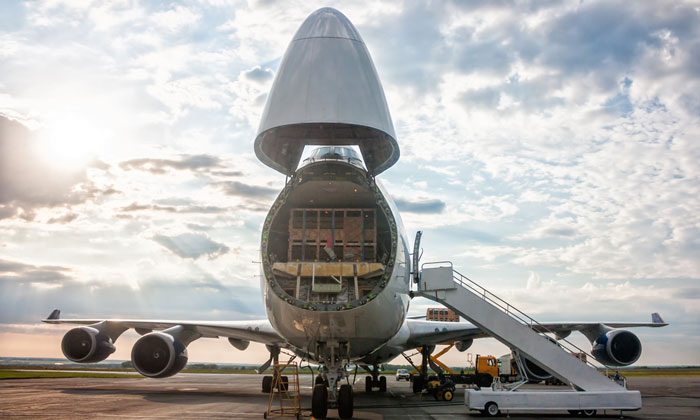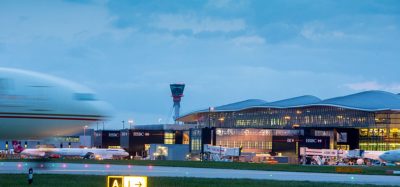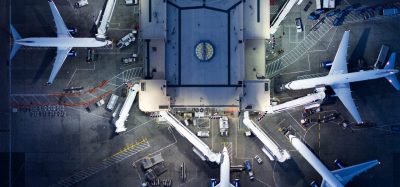Cargo focus: IATA’s 21 tips for optimising low automation operations
Posted: 15 May 2017 | Ricardo Aitken | IATA | No comments yet
Optimising cargo operations is important but far from straightforward. Here are Ricardo Aitken’s twenty one key tips to ensure success…


It is well understood that air cargo operations are a complex dance. A complicated ballet that weaves together multifaceted information with physical goods along a pre-determined process flow line taking into consideration unique infrastructure restraints, high turnover of personnel, and typically outdated technology.
With the air cargo industry now facing increased customer demand for greater reliability, faster transit times and improved transparency, airport cargo terminal operators (CTOs) are under great pressure to meet these needs while at the same time reducing costs and enhancing flexibility. It’s one thing when the cargo terminal operator (CTO) operates at a modern, fit-for-purpose, automated facility, but how about the CTOs operating in legacy manual/low automation facilities? How can they adapt and improve their performance and visibility in the customers’ eyes?
Based on experience, the whole process can be distilled into four basic steps:
Join us live: Shaping the Next Generation of Hold Baggage and Air Cargo Screening
Join us live for an insightful webinar on 11th December at 14:00 GMT, in collaboration with Smiths Detection, as we explore the strategic balance of operational efficiency, regulatory compliance, and sustainability in high-volume security environments.
This session offers a focused look into future-proofing your security strategy.
Key learning points
- Cost Reduction: Strategies to minimize bag travel time while simultaneously reducing operational costs.
- Regulatory Roadmap: Insights into the next wave of regulatory changes and their impact on future investment decisions.
- Sustainable Systems: Practical approaches to building sustainability into security systems and lowering the total cost of ownership (TCO).
- Scalable Solutions: Real-world examples of scalable systems supporting current airport growth and preparing for tomorrow.
Register now for expert insights, case studies, and actionable strategies on operational efficiency!
- Identify the Bottlenecks – the internal perspective (a.k.a “the facts”)
- Liaise with Stakeholders – the external perspective (a.k.a “the needs”)
- Measure Performance – the old adage of “if you can’t measure, you can’t improve” (a.k.a “the goal”)
- Develop a Sustainable Plan – without an actionable plan, the best intentions in the world are worthless (a.k.a “the solution”)
#1 Follow the box to identify bottlenecks
Unfortunately, there is no magical all-encompassing, turn-key checklist to identify bottlenecks. Despite the prescribed cargo flow in most airport warehouses being quite similar across the globe, each cargo terminal will have their own individual characteristics and challenges.
As such, the first step in optimizing manual/low automation operations is to make an honest assessment of operations to establish the facts. What is the real hindrance in the operations? This can be as easy as asking simple questions such as, ‘where do the cargo boxes get stuck?’ Taking half a day to track a couple of shipments from when the cargo enters the premises (i.e. crosses the gate) until the cargo is loaded into the aircraft will definitely help understand whether a CTO is really operating an efficient, throughput-oriented facility.
#2 Interact with stakeholders
Customers increasingly expect a higher level of engagement and transparency. They all want a seamless air cargo experience 100% of the time. Unfortunately this is not possible given the intrinsic challenges of our industry. As such, it is important to have good communication with stakeholders whether they be clients, service partners or even colleagues from the CTO’s global team.
Given this shift to partner/customer centric relationships, CTO managers and executives need to embrace change in order to remain competitive. It is not enough to try to placate customers when something goes wrong. Rather, it is important to understand their needs beforehand. This can be done by observing their behaviour at the warehouse or by scheduling regular conversations. A short monthly meeting with cargo stakeholders goes a long way to individually assure them that their complaints and needs are being met. In addition, this regular interaction serves as forum for receiving valuable feedback about the CTO’s operation. Overall, it generates greater trust and a positive atmosphere that definitely adds value and serves to distinguish CTOs from their competition.
#3 Measure! Measure! Measure!
Adherence to the right Key Performance Indicators (KPIs) allows CTOs to make fast yet better informed business decisions. When properly selected, they provide valuable business insight and allow for enhanced asset utilisation through intelligent demand, supply and capacity planning for streamlined processes and optimised revenue.
The typical approach is to benchmark operations at competitor or best-in-class airports and develop similar KPIs. Although this approach does provide insight into industry best practice, it is important to remember that each CTO is unique. Each has their own challenges and their own vision statement and values. As such, the individual Key Performance Drivers (KPDs) of each CTO need to be determined first in order to adopt the right customised KPIs to achieve the desired intelligence, predictability and value in individual operations. Proper customised KPIs establish a culture of accountability and provide guidance regarding what personnel should strive for. They will help define a CTO’s goals and as such required a good mix of both quantitative and qualitative KPI targets.
What is the ultimate mission of the warehouse? Measure accordingly.
#4 Generate a Roadmap for Improvement
The last step is about implementing solutions that remove bottlenecks, address stakeholder needs and align with company targets. This requires the development of a solutions roadmap with planning, measuring, comparison and acting steps. A good solution roadmap requires foresight, preparation, analysis, alignment with appropriate strategy, comprehensive documentation and well defined guidelines on how to implement solutions. It helps keep track of progress and impact as well as proof of success via clear milestones in the short-, mid- and long-terms. Without a solid roadmap, optimisation of operations is just a pipe dream.
#5 Bring it all together
In an ideal world, all CTO problems could be solved by physical expansion of existing facilities or additional budget. However, given the lack of developable land in space constrained airports and the tendency for air cargo operations to be low on the priority list, this is not likely the case. As such, CTOs need to make do with what they already have. This goes doubly so in the case of manual/low automation operations.
Buying new equipment is not necessarily the answer. Often the solution is better utilisation and process integration of existing equipment.
Manual/low automation CTOs should not be afraid to step back and make fundamental process changes. If there is a lack of expertise, enlisting the help of an outside expert should be considered. Sometimes all it takes is a fresh pair of eyes to see the optimisation opportunities that might be in plain sight.
In any case, based on application of the four steps mentioned above at multiple manual/low automation operations around the world, here are an additional 16 optimization tips.
#6 Review and optimise processes to minimise the number of human “touch points”
Either on the cargo itself (or regarding data entry) in order to reduce the impact of human error. Quite often processes are just legacy Standard Operating Procedures (SOPs) which have not been updated to match the changes in the business. Perhaps 10 years ago they made sense or they were never updated and simply passed on from supervisor to personnel over the years without inquiry if indeed was best practice. A holistic mapping and optimisation of existing processes will yield high gains in performance. Good SOPs will avoid systemic bottlenecks.
#7 Focus on the value stream
Highest customer value at the lowest total cost should be one of the top priorities. As per lean practice principles, standardisation should be adopted to reduce variance and waste caused by non-value added activities. If necessary, a value stream map should be created to determine which activities create cost and which add value.
#8 Consider adopting a Warehouse Management System (WMS) / Warehouse Control System (WCS)
WMS and WCS provide real time information to better manage throughput and to deal promptly with delays. That said, don’t rush. Manual/low automation facilities should upgrade to such programs selectively. Either conduct the four steps above or bring in an outside specialist to exhaustively categorise all individual warehouse needs before generating a Request for Proposal (RfP). The software system provider should in no way dictate what a CTO needs. Rather they should fully demonstrate how their program can cover all CTO-defined needs. The WMS/WCS solutions should be intuitive and at the same time not generate unnecessary work for personnel. It is quite easy to fall for unnecessary functions. In a nutshell, the WMS/WCS should allow CTOs to efficiently track cargo movement within a facility, generate customer notifications and allow for streamlining of historical and projected data that will help with resource planning and customised KPIs benchmarking. A manual/low automation CTO might consider a Software as a Service (SaaS) solution instead of heavily customised onsite solutions initially.
#9 Consider implementing a truck management system
Docks are the crucial link between the landside and the airside since all cargo must flow in and out of the docks. As previously mentioned, a simple scheduling system is an easy way to manage arrival rates. A more advance solution is the implementation of a comprehensive truck yard management system which includes truck parking allocation systems and/or specific dock allocation systems (limited availability). These type of systems allow CTOs to better handle not only specialised cargo but also express cargo arriving just in time to make their flight.
#10 Refine the storage allocation system
There are multiple ways to store cargo in a warehouse (e.g. “First In, First Out” (FIFO), “Last In, First Out” (LIFO), etc). However, determination of final storage position should take into consideration not only infrastructure limitations, processes and the current labelling/tagging system for efficient use of physical space and proper cargo prioritisation but also whether it is intuitive to the personnel conducting the storage procedure. This will help avoid misplacing or even losing the cargo inside the warehouse. A storage allocation system should be easy to scale as operations grow but at the same time straightforward enough to alter as market demand requires change in equipment or particular commodity handling.
#11 Redesign layout and space utilisation
Modern warehouse design needs to consider efficiency as well as health and safety. Employees must have enough space to work in/ move around and these areas should be clearly delineated taking into consideration any vehicles/machinery that will be used. As previously mentioned, following a cargo shipment from end-to-end will allow CTOs to assess overall workflow and identify inefficient paths, wasted motions, unnecessary delays, congested aisle or work areas and the true impact of unavailable equipment.
#12 Consider conducting a Functional Requirements Analysis Model (FRAM) study
FRAM studies are applicable to both existing and new warehouses, a FRAM can help determine both general and specific design criteria related to functional handling/storage areas and equipment per commodity type as well as international health, safety and security standards. When properly combined with an Air Cargo Terminal Analysis (ACTA) it can provide full understanding of a CTO’s cargo flow and operational characteristics taking into consideration Master Plan details, existing/proposed equipment and functionality, business strategies and high level design options.
#13 Establish and effective maintenance plan
Incorporating a strict and coordinated schedule for routine equipment tune up and care is crucial to avoid downtime. Establish higher levels of accountability for in-house maintenance or if necessary, engage in strict Service Level Agreements (SLAs) with reliable third parties. Personnel who are not given the necessary equipment they need can’t help but be less effective.
#14 Maintain tidiness
Along the lines of maintenance, all equipment and uniforms should be kept clean. In addition all equipment should be kept in specifically assigned areas when not in use. This enhances both safety and productivity as well as professionalism in the eyes of clients.
#15 Break down the silos
Clear communication channels are the key to enhancing operations. Maintenance and operations should communicate to properly schedule the maintenance of equipment. HR and operations should coordinate staff availability and training. Sales and reservations should work closely with operations to ensure what they are promising clients can be fulfilled. Customer service should connect with operations to ensure customer complaints are being taken care of and not repeated. When departments plan independently, it negatively impacts profits and corporate goals. Eliminating the silos removes the barriers to innovation and collaboration which in turn will fuel growth and optimisation.
#16 Invest in personnel
People are the CTO’s internal stakeholders. They are what can make or break manual/low automation operations. They are a business’s first line of defence. When something goes wrong, their training levels will dictate if they react in positive or negative manner. Investing in proper training to educate staff about industry best practice and the latest regulations will elevate know-how and make them more effective when responding to a crisis. One must also not forget to develop effective standards to which personnel must be held accountable. Regular communication and proper reward systems are also not waste of time or money. Investing in personnel is also likely to reduce turnover, a serious problem for the air cargo industry today.
#17 Communicate often with personnel
Clear and regularly communicating organisational goals and the actions/processes needed to achieve them can enhance operation. Failing to create an open communication environment will only lead to productivity losses and unhappy qualified personnel more likely to move to the competition should the opportunity arise.
#18 Connect client strategies to CTO’s strategies
Connecting company strategy to clients’ strategies helps CTOs plan, respond and deliver what their biggest clients want. The only way to do so is by establishing regular communication channels to create a positive atmosphere of trust.
#19 Develop an easy to use data dashboard
Data collection is the foundation for proper benchmarking of performance. However, don’t forget to create a dashboard that will provide easy access to data when it comes to developing business intelligent. Too often, manual/low automation operations have a lot of data available but is not easily searchable or dependable. Sometimes manual input is used, thus reducing reliability of the data. Other times it is an Excel file but only a limited number of personnel understand how it can be manipulated to provide easy to read data query results. A data dashboard would provide management with easier access to frequently required data.
#20 Do not rely on manual data entry
Personnel writing on pieces of paper or typing in numbers will only lead to human data entry errors. Automating data entry (either via bar code scanning or even RFID if possible in your market) will increase accuracy and overall productivity. It can eliminate errors associated with identification, counting and location. It will avoid mistakes that tie up scarce resources to fix. If not possible to automate, then CTOs must revise the forms/equipment in order to keep data entry as simple as possible.
#21 Consider integrating new technologies in a structured way
There is a lot of buzz about how the use augmented reality (AR) devices in the warehouse is a better alternative to handheld devices, about how integration of the Internet of Things (IOT) will increase traceability and even how indoor drones might revolutionise warehouse operations. However as a manual/low operation CTO, it is not necessary to be an early adopter of top tier technology. Simply integrating the latest in fork lift technology can potentially help lower operating costs, reduce downtime and improve safety.


Ricardo Aitken is a project manager in the Consulting Division of the International Air Transport Association (IATA). He is responsible for projects in the areas of:
Air Cargo / Ground Handling – Business Planning and Infrastructure Development
Air Cargo / Ground Handling – Operations and Logistics
Before joining IATA, Ricardo worked at Lufthansa Consulting, a world-class German aviation and management consulting firm, as a consultant to diverse projects across the globe.
Mr. Aitken has worked on-site for projects in Australia, Brazil, Cambodia, Djibouti, Ecuador, Germany, Japan, Kazakhstan, Luxembourg, Rwanda, Saudi Arabia, Thailand and Trinidad.
Mr. Aitken has four engineering degrees.
Stay Connected with International Airport Review — Subscribe for Free!
Get exclusive access to the latest airport and aviation industry insights from International Airport Review — tailored to your interests.
✅ Expert-Led Webinars – Gain insights from global aviation leaders
✅ Weekly News & Reports – Airport innovation, thought leadership, and industry trends
✅ Exclusive Industry Insights – Discover cutting-edge technologies shaping the future of air travel
✅ International Airport Summit – Join our flagship event to network with industry leaders and explore the latest advancements
Choose the updates that matter most to you.
Sign up now to stay informed, inspired, and connected — all for free!
Thank you for being part of our aviation community. Let’s keep shaping the future of airports together!
Related topics
Aeronautical revenue, Air freight and cargo, Airside operations, Ground handling


















